#reviews
Text



Barnes and Noble released some reviews of the Book of Bill...written by Bill himself!
#gravity falls#The Book of Bill#Bill Cipher#Alex HIrsch#Barnes and Noble#B&N#gravity falls fandom#Reviews#book review#book reviews#The nacho reviewed his own book#Cipher#Gravity Falls is real and it will never die#Book of Bill#Disney Books#Disney TVA
2K notes
·
View notes
Text



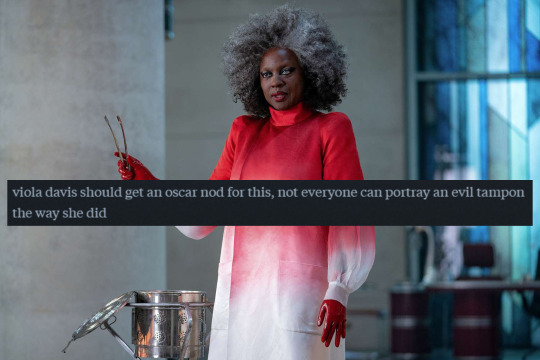

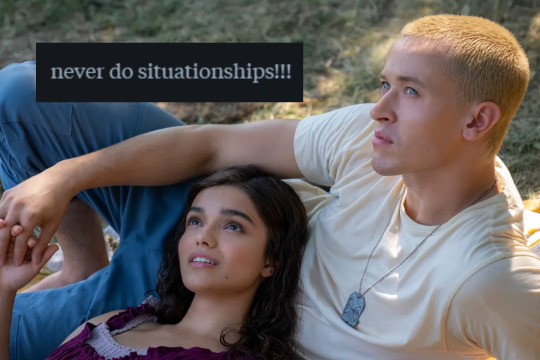

More BOSAS Reviews Pt 3 ⭐
#The Ballad of Songbirds and Snakes#TBOSAS#BOSAS#coriolanus snow#Lucy Gray Baird#volumnia gaul#Review#Funny#The Hunger Games#president snow#hunger games#thg#Funny Reviews#Reviews
4K notes
·
View notes
Text
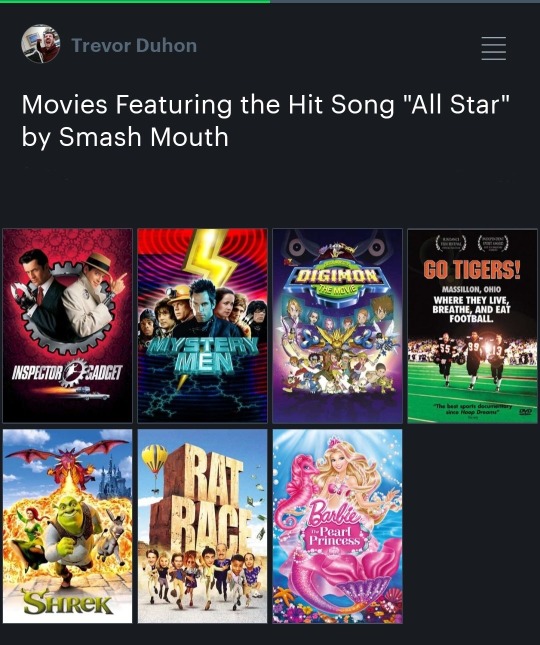
#letterboxd#movie#movie review#movie reviews#movies#movie recommendation#movie recommendations#review#reviews#steve harwell#smash mouth#all star#barbie the pearl princess#rat race#shrek#go tigers#digimon#digimon the movie#mystery men#inspector gadget
7K notes
·
View notes
Text

#Here is an Actual Review of Bram Stoker’s Novel Dracula by a Bat#Bat Review#bat#bats#Dracula#Bram Stoker#vampire#vampires#reviews
823 notes
·
View notes
Text
Have not read any reviews yet but that’s a hell of a good start lmao

Peter Bradshaw - The Guardian
#imma spend the rest of the night reading these tbh#daniel craig#queer 2024#luca guadagnino#drew starkey#venice film festival#reviews#movie review#letterboxd
998 notes
·
View notes
Text
Kelly and Zach Weinersmith’s “A City On Mars”

In A City On Mars, biologist Kelly Weinersmith and cartoonist Zach Weinersmith set out to investigate the governance challenges of the impending space settlements they were told were just over the horizon. Instead, they discovered that humans aren't going to be settling space for a very long time, and so they wrote a book about that instead:
https://www.acityonmars.com/
The Weinersmiths make the (convincing) case that ever aspect of space settlement is vastly beyond our current or reasonably foreseeable technical capability. What's more, every argument in favor of pursuing space settlement is errant nonsense. And finally: all the energy we are putting into space settlement actually holds back real space science, which offers numerous benefits to our species and planet (and is just darned cool).
Every place we might settle in space – giant rotating rings, the Moon, Mars – is vastly more hostile than Earth. Not just more hostile than Earth as it stands today – the most degraded, climate-wracked, nuke-blasted Earth you can imagine is a paradise of habitability compared to anything else. Mars is covered in poison and the sky disappears under planet-sized storms that go on and on. The Moon is covered in black-lung-causing, razor-sharp, electrostatically charged dust. Everything is radioactive. There's virtually no water. There are temperature swings of hundreds of degrees every couple of hours or weeks. You're completely out of range of resupply, emergency help, or, you know, air.
There's Helium 3 on the Moon, but not much of it, and there is no universe in which is it cheaper to mine for Helium 3 on the Moon than it is to mine for it on Earth. That's generally true of anything we might bring back from space, up to and including continent-sized chunks of asteroid platinum.
Going to space doesn't end war. The countries that have gone to space are among the most militarily belligerent in human history. The people who've been to space have come back perfectly prepared to wage war.
Going to space won't save us from the climate emergency. The unimaginably vast trove of material and the energy and advanced technology needed to lift it off Earth and get it to Mars is orders of magnitude more material and energy than we would need to resolve the actual climate emergency here.
We aren't anywhere near being a "multiplanetary species." The number of humans you need in a colony to establish a new population is hard to estimate, but it's very large. Larger than we can foreseeably establish on the Moon, on Mars, or on a space-station. But even if we could establish such a colony, there's little evidence that it could sustain itself – not only are we a very, very long way off from such a population being able to satisfy its material needs off-planet, but we have little reason to believe that children could gestate, be born, and grow to adulthood off-planet.
To top it all off, there's space law – the inciting subject matter for this excellent book. There's a lot of space law, and while there are some areas of ambiguity, the claims of would-be space entrepreneurs about how their plans are permissible under the settled parts of space law don't hold up. But those claims are robust compared to claims that space law will simply sublimate into its constituent molecules when exposed to the reality of space travel, space settlement, and (most importantly) space extraction.
Space law doesn't exist in a vacuum (rimshot). It is parallel to – and shares history with – laws regarding Antarctica, the ocean's surface, and the ocean's floor. These laws relate to territories that are both vastly easier to access and far more densely populated by valuable natural resources. The fact that they remain operative in the face of economic imperatives demands that space settlement advocates offer a more convincing account than "money talks, bullshit walks, space law is toast the minute we land on a $14 quadrillion platinum asteroid."
The Weinersmiths have such an account in defense of space law: namely, that space law, and its terrestrial analogs, constitute a durable means of resolving conflicts that would otherwise give rise to outcomes that are far worse for science, entrepreneurship, human thriving or nation-building than the impediments these laws represent.
What's more, space law is enforceable. Not only would any space settlement be terribly, urgently dependent on support from Earth for the long-foreseeable future, but every asteroid miner, Lunar He3 exporter and Martian potato-farmer hoping to monetize their products would have an enforcement nexus with a terrestrial nation and thus the courts of that nation.
But the Weinersmiths aren't anti-space. They aren't even anti-space-settlement. Rather, they argue that the path to space-based scientific breakthroughs, exploration of our solar system, and a deeper understanding of our moral standing in a vast universe cannot start with space settlements.
Landing people on the Moon or Mars any time soon is a stunt – a very, very expensive stunt. These boondoggles aren't just terribly risky (though they are – people who attempt space settlement are very likely to die horribly and after not very long), they come with price-tags that would pay for meaningful space science. For the price of a crewed return trip to Mars, you could put multiple robots onto every significant object in our solar system, and pilot an appreciable fleet of these robot explorers back to Earth with samples.
For the cost of a tiny, fraught, lethal Moon-base, we could create hundreds of experiments in creating efficient, long-term, closed biospheres for human life.
That's the crux of the Weinersmiths' argument: if you want to establish space settlements, you need to do a bunch of other stuff first, like figure out life-support, learn more about our celestial neighbors, and vastly improve our robotics. If you want to create stable space-settlements, you'll need to create robust governance systems – space law that you can count on, rather than space law that you plan on shoving out the airlock. If you want humans to reproduce in space – a necessary precondition for a space settlement that lasts more than a single human lifespan – then we need to do things like breed multiple generations of rodents and other animals, on space stations.
Space is amazing. Space science is amazing. Crewed scientific space missions are amazing. But space isn't amazing because it offers a "Plan B" for an Earth that is imperiled by humanity's recklessness. Space isn't amazing because it offers unparalleled material wealth, or unlimited energy, or a chance to live without laws or governance. It's not amazing because it will end war by mixing the sensawunda of the "Pale Blue Dot" with the lebensraum of an infinite universe.
A science-driven approach to space offers many dividends for our species and planet. If we can figure out how to extract resources as dispersed as Lunar He3 or asteroid ice, we'll have solved problems like extracting tons of gold from the ocean or conflict minerals from landfill sites, these being several orders of magnitude more resource-dense than space. If we can figure out how to create self-sustaining terraria for large human populations in the radiation-, heat- and cold-blasted environs of space, we will have learned vital things about our own planet's ecosystems. If we can build the robots that are necessary for supporting a space society, we will have learned how to build robots that take up the most dangerous and unpleasant tasks that human workers perform on Earth today.
In other words, it's not just that we should solve Earth's problems before attempting space settlement – it's that we can't settle space until we figure out the solutions to Earth's problems. Earth's problems are far simpler than the problems of space settlement.
As I read the Weinersmiths' critique of space settlement, I kept thinking of the pointless AI debates I keep getting dragged into. Arguments for space settlement that turn on existential risks (like humanity being wiped out by comets, sunspots, nuclear armageddon or climate collapse) sound an awful lot like the arguments about "AI safety" – the "risk" that the plausible sentence generator is on the verge of becoming conscious and turning us all into paperclips.
Both arguments are part of a sales-pitch for investment in commercial ventures that have no plausible commercial case, but whose backers are hoping to get rich anyway, and are (often) sincerely besotted with their own fantasies:
https://locusmag.com/2023/12/commentary-cory-doctorow-what-kind-of-bubble-is-ai/
Both AI and space settlement pass over the real risks, such as the climate consequences of their deployment, or the labor conditions associated with their production. After all, when you're heading off existential risk, you don't stop to worry about some carbon emissions or wage theft.
And critically, both ignore the useful (but resolutely noncommercial) ways that AI or space science can benefit our species. AI radiology analysis might be useful as an adjunct to human radiological analysis, but that is more expensive, not less. Space science might help us learn to use our materials more efficiently on Earth, and that will come long before anyone makes rendezvous with a $14 quadrillion platinum asteroid.
There are beneficial uses for LLMs. When the Human Rights Data Analysis Group uses an LLM to help the Innocence Project New Orleans extract and categorize officer information from wrongful conviction records, they are doing something valuable and important:
https://hrdag.org/tech-notes/large-language-models-IPNO.html
It's socially important work, a form of automation that is an unalloyed good, but you won't hear about it from LLM advocates. No one is gonna get rich on improving the efficiency of overturning wrongful convictions with natural language processing. You can't inflate a stock bubble with the Innocence Project.
By the same token, learning about improving gestational health by breeding multigenerational mouse families in geosynchronous orbit is no way to get a billionaire tech baron to commit $250 billion to space science. But that's not an argument against emphasizing real science that really benefits our whole species. It's an argument for taking away capital allocation authority from tech billionaires.
I'm a science fiction writer. I love stories about space. But I can distinguish fantasy from reality and thought experiments from suggestions. Kim Stanley Robinson's 2015 novel Aurora – about failed space settlement – is every bit as fascinating and inspirational as "golden age" sf:
https://memex.craphound.com/2015/11/02/kim-stanley-robinsons-aurora-space-is-bigger-than-you-think/
But still, it inspired howls of outrage from would-be space colonists. So much so that Stan wrote a brilliant essay explaining what we were all missing about space settlement, which I published:
https://boingboing.net/2015/11/16/our-generation-ships-will-sink.html
With City on Mars, the Weinersmiths aren't making the case for giving up on space, nor are they trying to strip space of its romance and excitement. They're trying to get us to focus on the beneficial, exciting, serious space science we can do right now, not just because it's attainable and useful – but because it is a necessary precondition for any actual space settlement in the distant future.

If you'd like an essay-formatted version of this post to read or share, here's a link to it on pluralistic.net, my surveillance-free, ad-free, tracker-free blog:
https://pluralistic.net/2024/01/09/astrobezzle/#send-robots-instead
#pluralistic#books#reviews#space#bezzles#mars#spacex#robots#science#space science#space travel#space settlement#space colonization
1K notes
·
View notes
Text
Letterboxd reviews for Saw X
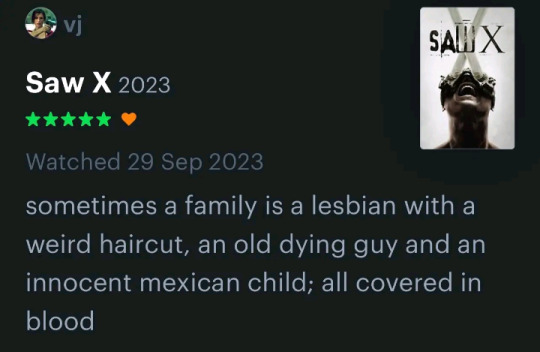


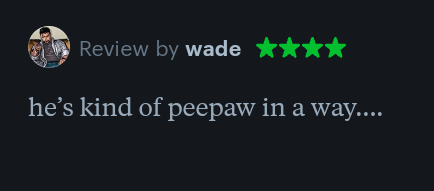
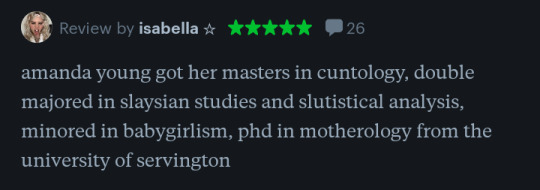





#saw shitpost#saw franchise#saw movies#saw x#saw x spoilers#saw x (2023)#amanda young#john kramer#jigsaw#saw 2004#saw#letterboxd#reviews#funnyshit#what the fuvk#Bruh they brought back Amanda after years and made her look like fucking Spock
3K notes
·
View notes
Note
How do you cope with seeing negative reviews about your work? I've always dreamed of publishing a novel, but I'm very afraid of seeing criticism online if I did.
You cope. You might cope by not reading them, or by not going online, or by deciding that different people have different tastes and it's a good thing that not everyone likes the same things because otherwise there would be no room in the world for those of us who make things that aren't intended for everyone. But however you do it, you cope.
2K notes
·
View notes
Text
So anyway, about the critics and the audience score...

#it's controversial#this meme skar king laughs at kong is officially a MEME#I'M KEEPING THIS#seriously i don't take an opinion of the critics is bad#audience score wins#then i should probably gonna watch the movie again#my money's on gxk#godzilla#kong#skar king#monsterverse#kaiju#godzilla x kong: the new empire#gxk#reviews
444 notes
·
View notes
Text
The Interview With the Vampire TV show is a perfect example of how adaptations do not have to follow the source material closely to be an excellent adaptation.
(This is a spoiler-free commentary, but it does discuss the dynamics of the characters in general.)

I read the books back in the day, and of course, saw the original movie. Despite a laundry list of big changes, the series still feels extremely true to the books because it captures the spirit. It gets the characters and their fucked-up dynamics right. It doesn't shy away from them being melodramatic monsters. It keeps to the rules established in the source material. The show also makes sure to preserve key moments and key scenes, but always with a twist.
Since they did that, they were free to shift things in time, amp up and adapt certain dynamics, and change the race of characters in a way that deepens the story and complicates already extremely complicated power dynamics.

The original movie stuck more closely to the era and the appearance of the characters as described by Anne Rice, but I don't think the story loses anything by changing those two elements. In fact, it gives it modern relevance and room for political and social commentary.
I have never ascribed to the idea that an adaptation has to be slavishly accurate to the source material to be a good adaptation. It just has to be smart enough to identify what to keep and what can change. An adaptation adapts. Honestly, I find it boring when I see exactly what was in a book up on screen with no surprises. Where's the fun in that?
The difference between a good adaptation and a bad one is not how accurate it is to the source material, but how well the adaptation respects what made the story compelling to begin with.
What's important here?
Lestat is dramatic and powerful and a monster who is deeply charismatic, but also manipulative.
Louis is overdramatic and self-hating, but oddly drawn to Lestat.
Claudia is fierce, but bitter about her eternal childhood.
Their relationship is deeply toxic but with true affection. They are monsters, but monsters capable of intense love and devotion - to the point where it has the power to destroy them.
THAT is at the core of this story. THAT is what they keep intact. This frees up all sorts of avenues for play around a few key plot beats.
This room for play also gives opportunities to expand on thinner characters or rewrite them entirely. It's been a long time since I read the books, but I don't recall Daniel standing out as more than a framing device, especially in earlier books. But in the show, he's one of the best parts. Not only does he take a much more active role in the story, he delivers some of the most hilarious and cutting lines of the entire series. If the show had stuck closely to the source material, we wouldn't have this Daniel.

It was also smart of them to make Claudia a few years older. The eternal child element is preserved, but the layer of arrested teenaged hormones and womanhood that will never blossom adds an extra layer of angst and sadness. She is stuck forever in a state of rebellion, never allowed to settle and come into her own.
Having her be a young Black woman also deepens her attachment to Louis, visually, socially and symbolically. They are different from Lestat and they understand each other in a way he never can. She's still very much the Claudia from the book but with layers added to deepen her character and add new, fresh dynamics and complications.

It's also delightful to see the show take the homoeroticism that was subtextual in the early books with Louis and Lestat (and in the original film) and making it unapologetically text. Anne Rice's Vampire Chronicles have always been incredibly queer and subversive, but it's amazing to see that side of it fully embraced and stated plainly with no ambiguity or qualifiers or hints. It's queer and that queerness is woven into the fabric of the entire narrative. Louis and Lestat are the toxic beating heart of the Vampire Chronicles.
It's also important because we need messy, dark, fucked-up queer narratives. Sweet, coming-of-age stories and romances are of course, important - especially for younger queer people. But us older queer folk not only want to see ourselves in multiple genres, we want permission to see imperfect, messy, and yes, even evil characters. It's a way of reclaiming the monstrous queer that was villainized for so long and making it our own. We want to find something beautiful in the dark.

If we all thought about it, we could probably think of dozens of examples where a show or movie went far off-script from the source material and was still an excellent adaptation.
Interview With the Vampire is just the most recent and one of the best examples of a stellar adaptation that respects the source material but also builds and expands on it.
I look forward to seeing how they surprise me next season.

#interview with the vampire#amc iwtv#iwtv#amc interview with the vampire#loustat#fandom discussion#fandom commentary#queer characters#queer media#queerness#book adaptation#reviews#commentary#television commentary#tv commentary#tv series#lestat de lioncourt#claudia de lioncourt#claudia de pointe du lac#louis de pointe du lac#amc immortal universe
186 notes
·
View notes
Text
i just really want to scream about this movie into the void because it was so well done, and i doubt anyone will really see this but i don't really have anyone i could have a deep discussion about this with.
trigger warning and spoiler warning ahead for the movie blink twice. content ahead discusses themes around sa, including r*pe, drugging, manipulation, and general physical/verbal abuse.
i don't keep up with any previews or recent movie releases much anymore, so i was going into this movie almost completely blind like i do with most new movies anymore. i had seen one preview, but it was apparently plain and simple enough for me to mostly forget about it. the irony in that will be made known a bit later on.
the movie automatically opens with a screen that displays a trigger warning, which is something that i had been seeing for the first time in any kind of visual media. normally these things are already listed by the ratings, but as a sa survivor who had no idea what this movie was going to be, it was a good thing to see so i could brace myself for what was to come. do i think this is necessary for any and every movie of this kind? no, it feels a little redundant (again, these things are typically included in the ratings). and, well, asking me to not watch if it would upset me is kind of a no deal, since i paid for a ticket and popcorn to see this on the big screen.
we're immediately introduced to our two main characters, two best friends, and it's hard to not immediately fall for their relationship with each other. so playful and silly and ridiculous, you can immediately tell they adore each other's company in their shitty job living in their shitty apartment, and you can tell that they're written by a woman who loves these characters and wants to portray them as relatable people. the interactions between the whole cast of girls, i think, was just outstandingly done. they felt realistic, not constantly shitting on each other and fighting for the attention of the men (though some jealousy of that fashion is still portrayed). they were all there enjoying the island and they ended up bonding together wonderfully. they were funny without being over-the-top rude or nasty or promiscuous, as is portrayed commonly in female characters in popular media. i can't and won't stop gushing over how much these characters felt just like real life girls that i was hanging out with.
this movie was really great at putting a pit in your stomach and slowly making it grow. of course, the trigger warning at the beginning spoils what's to come, so for me the pit was there from the start. any sensible person who's been socialized to be a woman will know, you don't ever just run away with some random ass group of men you don't know to the middle of nowhere with no cell service. but the little things that make the main character, frida, stop and question are so subtle, and so easily dismissed to start with. the used lip gloss in the drawer, the available clothes despite being an "unexpected" guest, the weird cleaning staff. but they increasingly get more odd. the island is full of venomous snakes and they all have to be killed on sight. something about these flirty interactions isn't quite right anymore, and he's talking about repressed memories. what day even is it? why am i always waking up with dirt under my nails?
who even knows or cares though, since we're all high and/or drunk 24/7. welcome to paradise!
it builds and builds until it begins to unravel, slowly and then all at once as the girls come to the realization of what happens to them every night when they get unbelievably high after dinner. the bond between the first two to piece it together was outstanding, and i love that there wasn't a cheap "find the phones and call authorities" plan. they worked out why that wouldn't work at all, because who would they believe? the "hysterical bitches" making claims without any kind of solid evidence, or the rich white man who's now a reformed soul and probably good friends with some of the cops?
the ending is not a happy one, in my eyes, though i believe it was probably supposed to be portrayed as one? two girls live and three girls die by the end. the ringmaster (ceo) of the whole thing ends up accidentally taking his own forgetfulness juice and suddenly doesn't understand what's going on and why all his friends are dead or have been otherwise brutalized. he knocks over lit candles and then trips and knocks himself out in his stupor, and the island burns down, the photographic evidence (that was later discovered) and all. i thought it was just going to end there and we would be left with the ambiguous ending, and that's never satisfying and feels very overdone anymore.
but instead, we're given a scene where our main character is now the ceo of the company, and legally married to the man who lured her away and horrifically abused her. twice. i interpreted this as her getting her own form of justice/revenge. i doubt she gives him half the treatment he gave her, but now she controls him and everything he owns and knew, and gets every bit of respect she wants. he killed her best friend and two other girls after overpowering the lot of them every single night. in a perfect world, he'd get tried and punished for his crimes legally. but all the evidence of it ever happening burned to the ground. so this is what she does to cope. in the final scene, she seems very satisfied, more than pleased to make her new husband's old crew squirm. she becomes the thing that destroyed her and so many others (but yk, most likely without the rapist cult).
one character i very suddenly grew interested in was the scrawniest boy in the group. he flies perfectly under the radar and doesn't appear in many of scenes that portray the gruesome sa. the one where he's in clear view, he appears to be another victim, trying to flee from one of the bigger men and receiving a black eye, which he would have no memory of getting the next morning. he's told by one of the girls that he smells nice, most likely referencing the perfume that was making them forget everything. it seemed very clear that he was in a victim role here as well, likely also being sa-ed. but he's never seen bound and gagged with the girls.
his final scene gets interesting when the ceo berates him for doing nothing to help the girls the entire time (yeah, the same ceo millionaire who's been basically orchestrating this whole sick fucking show in his perfect little getaway island). how he thinks there's a special place in hell for people who sit and do nothing in the face of evil. there are two very different ways to interpret this. 1) he wasn't actually getting drugged and abused with the girls, and was there as someone who didn't actively participate in abusing the girls, but also didn't do anything to try to stop it either. this could be blatant commentary on the two types of evil; while "not all men" r*pe and abuse people, not enough men will speak out against it or try to run to the victim's defense. or 2) the ceo was casting blame onto someone who was genuinely confused as to what was happening (which seems to ring true in both scenarios), and someone who was also a victim and stuck in a completely helpless situation. both could hold some level of truth, but ultimately i read him as the latter, thinking he was meant to represent the less common male victim. he gets killed by one of the girls, who wasn't specifically targeting him but also wasn't taking any chances, and that's the last we see of him. in my eyes he could either be read as the kind of evil that merely observes and therefore was rightfully murdered, or he could represent his male victims often get forgotten about or less acknowledged, which could speak as to why he was killed off so quickly never to be discussed again.
and i've gotta say, one thing i really appreciate about the scenes depicting r*pe is that it put a lot of the focus on the r*pists and not their victims. they were careful to not show any nudity or any shots of the women getting r*ped, but still showed them getting forced down when they tried to flee. i have not personally seen any other graphic scenes of this nature in other movies, but from what i hear a lot of it can get rather pornographic, and i feel like that's incredibly distasteful when you're trying to depict something that's absolutely vile. this movie does a great job of getting the absolute terror of the moment across without compromising any of the actresses by posing them seductively or showing off their bodies, and same goes for the men (if you don't count a couple of them being shirtless).
the writing is so wonderful, and the little clues as to what's happening beneath the surface are so good and plentiful. this is a movie that i don't think i'd ever be able to sit through again, but the sense of dread that continued to grow and grow will surely stick with me. it was very darkly funny in many places, which did great to break up some of the tension. for anyone who was able to stomach it, i would highly recommend watching through it once you're able. i think it was outstandingly well done and handled certain things as well as it could without watering any of it down.
#blink twice#reviews#tw: sa#tw: r*pe#tw: abuse#tw: drugs#tw: substance abuse#i went through the trouble of censoring the r word just in case#apologies if it throws off the vibe or comes off as immature or w/e
172 notes
·
View notes
Text
Monument vs Shrine

In "Replica, Aura, and Late Nationalist Imaginings", the political scientist Benedict Anderson (most famous for his Southeast Asia scholarship and that definitive critique of nationalism, Imagined Communities) muses on the Lincoln memorial:
Within a temple explicitly mimicking "the religious edifices of a safely pagan Greece";
Mazda Corp floodlights designed "to ward off unnatural, indifferent sunlight";
The abstract enshrinements of "Lincoln's memory" in the "hearts of the people", while neither Lincoln's actual remains or any rites for people to perform are present;
The sense that ultimately the most reverential thing to do there is to take photographs.

+
The Lincoln Memorial; the Jefferson memorial next to it; both figures repeated again on Mt Rushmore; both figures repeated ad nauseum on dollar bills.
These monuments are designed to proliferate. Not only must they create a sober, stately experience for the visitor---but they must also do so consistently, because they are built for visitors: the mass audience of the national population.

Otherwise they must be physically replicable: a memorial to a particular national hero, erected in every city.
The very format of monument-building get copied:
Post-colonial countries, in need of new myths, choose to manufacture national cenotaphs of their own, in imitation of Western models.
Malaysia has Putrajaya, a federal capital sprung ex nihilo from palm-oil agricultural land, its buildings all arches and onion domes and imitation arc de triomphes in inhuman scale, its avenues broad and utterly unwalkable in the tropical heat.

+
At such monuments the citizen is cast as tourist.
Of this state-sanctioned object of devotion you are encouraged to take photographs, sell merchandise---ie: continue the process of replication. With every copy nationalism is reified.
God forbid you tweak the official monument with your own meanings, though! While writing this post, I found the following story, from December 2023:
"Lincoln Memorial temporarily closed after being vandalized with 'Free Gaza' graffiti"
+
Anderson's essay cites instances where the personal and irreproducible sneak back into, or leak out from, or vandalise, national monuments:
"Early in the 1910s,"---in Manila's Cementerio del Norte, a municipal cemetery planned by an American urban designer---"a small pantheon was constructed for the interment of Filipino national heroes."
This monument was to emulate the Pantheon in Paris, where "great Frenchmen" of the national canon are memorialised.
But the Filipino version failed.
"Today, hardly anyone in the Philippines is aware of this dilapidated pantheon's existence ... What has happened is that the Filipino Voltaire and Rousseau have managed to escape, summoning devoted, often familial bodysnatchers, to convey them to home-town shrines."

+
Not that the municipal cemetery itself is deserted. Custodians and their families live in the very mausoleums they care for.
Further, Anderson describes All Saints' Eve in the Cementerio del Norte, when thousands pour into its precincts.
But these multitudes adjourn to their own myriad family graves and small ancestral shrines: spending the day with immediate loved ones, "drinking, praying, gambling, making offerings ..."
Most of the Philippines' presidents have mausoleums in Norte, "but no one pays attention to them ... and only their separate descendants come to attend them."
"There is something exhilarating here that one rarely sees in national celebrations, maybe because the structure of the ceremonial is not serial, but entirely cellular."

+
Hometowns re-exerting themselves within the nation; ordinary people scrawling meaning onto the edifices of the uppercase-P People. A multitude of the singular, instead of a single mass.
Despite nationalism's efforts to centralise and clone a national identity, still we mutate, still we bootleg, still we graffiti, becoming once again ourselves.
And---particular to post-colonial societies---in doing so we casually continue the work of liberation, sneaking the idea of freedom away from our own architects and elites and prime ministers, who would seek to seize its meaning for their own purposes.
The churches or mosques or temples to demos that the federal government builds are ours to transform. To take from. To ignore.
"No need. We've got our own shrines at home."
+

National heroes become local saints and slip out of national control.
Does the Filipino government really control the various Rizalista sects? Karpal Singh is now a datuk kong, without his political dynasty's consent.
Across Melaka and Negeri Sembilan there once existed shrines dedicated to Hang Tuah, Malay folk hero, now a powerful figurehead of Malay-Muslim ethno-nationalism.

One such shrine existed at Tanjung Tuan:
With a plain altar---more a porch, really---of poured cement, for folk to leave food offerings;
Sunlight mottled from the surrounding forest, and fluorescent lights from a nearby gazebo;
A large rock, with an indent on its crown, said to be Hang Tuah's actual footprint;
The idea that this was a sacred space, where you could come to ask the spirits of the place for love or children.
The shrine that existed was sited in a forest reserve. It was swept clean of leaves by locals; its adherents belonged to all faiths and ethnicities; following the transactional logic of folk religion, those who had received its blessing would've paid for its maintenance.
+
"Existed".
Because the Religious Department of the State of Melaka destroyed the Hang Tuah shrine sometime in 2022, for the crime of idolatry.
A double heresy. An affront to both orthodox Sunni Islam---
But also to the Malaysian state, that sanctions Sunni Islam as its official religion; whose nationalism requires its mythic hero to have only the attributes and magics the state ulama and historians say he must have---and no others.
Local shrines are destroyed, because the nation-state intuits them to be threats to its exclusive franchise.

+
Image sources:
https://en.wikipedia.org/wiki/United_States_five-dollar_bill
https://en.wikipedia.org/wiki/Arc_de_Triomphe
https://en.m.wikipedia.org/wiki/Putrajaya
https://www.facebook.com/PilipinasRetrostalgia
https://www.globaltimes.cn/content/984521.shtml
https://www.facebook.com/PerakPress
https://en.m.wikipedia.org/wiki/Malays_(ethnic_group)
151 notes
·
View notes
Text



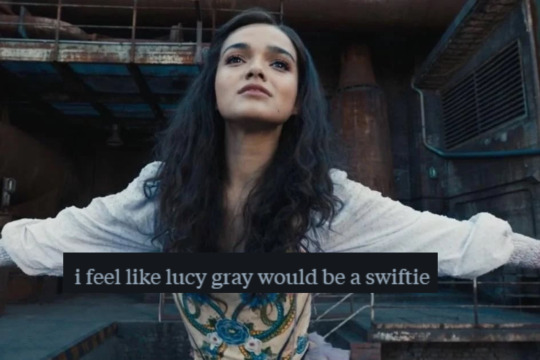
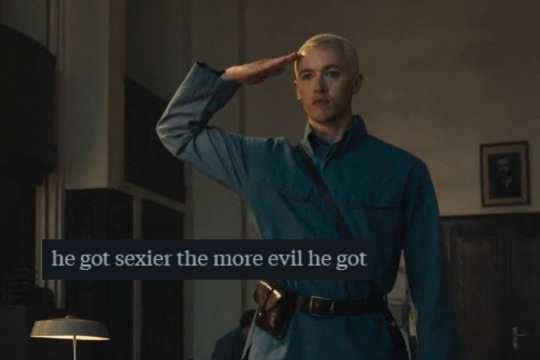

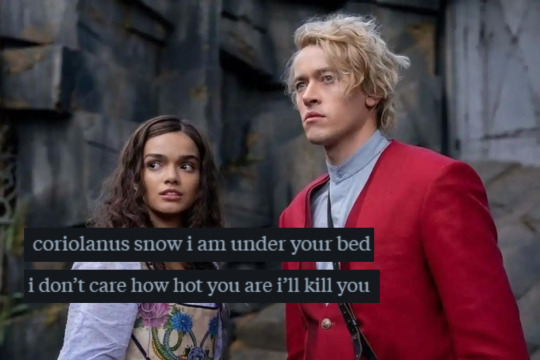
Pt 6
#the ballad of songbirds and snakes#the hunger games#THG#TBOSAS#BOSAS#coriolanus snow#lucy gray baird#Reviews#Funny Reviews#Funny#Ballad of songbirds and snakes
2K notes
·
View notes
Text
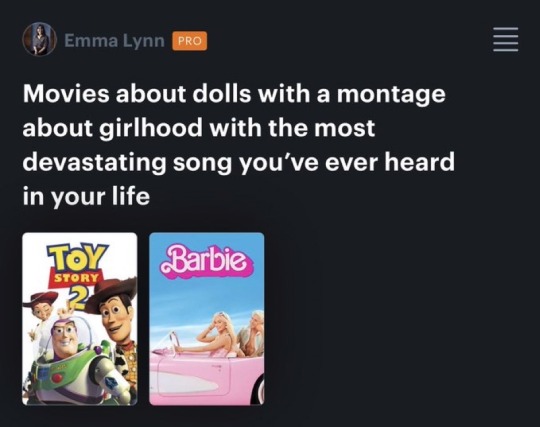
#letterboxd#movie#movie review#movie reviews#movies#movie recommendation#movie recommendations#review#reviews#barbie#greta gerwig#margot robbie#ryan gosling#toy story#toy story 2#barbie the movie#billie eilish
7K notes
·
View notes
Text

so has this been done or
#fanfiction#ao3#reviews#fanfiction culture#fandom#fandom culture#fandom criticism#writing#misc stuff#that made me stop scrolling#it will never cease to baffle me#that people can't see how absurd this is
198 notes
·
View notes
